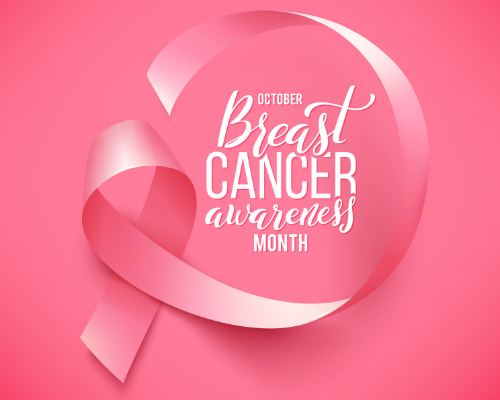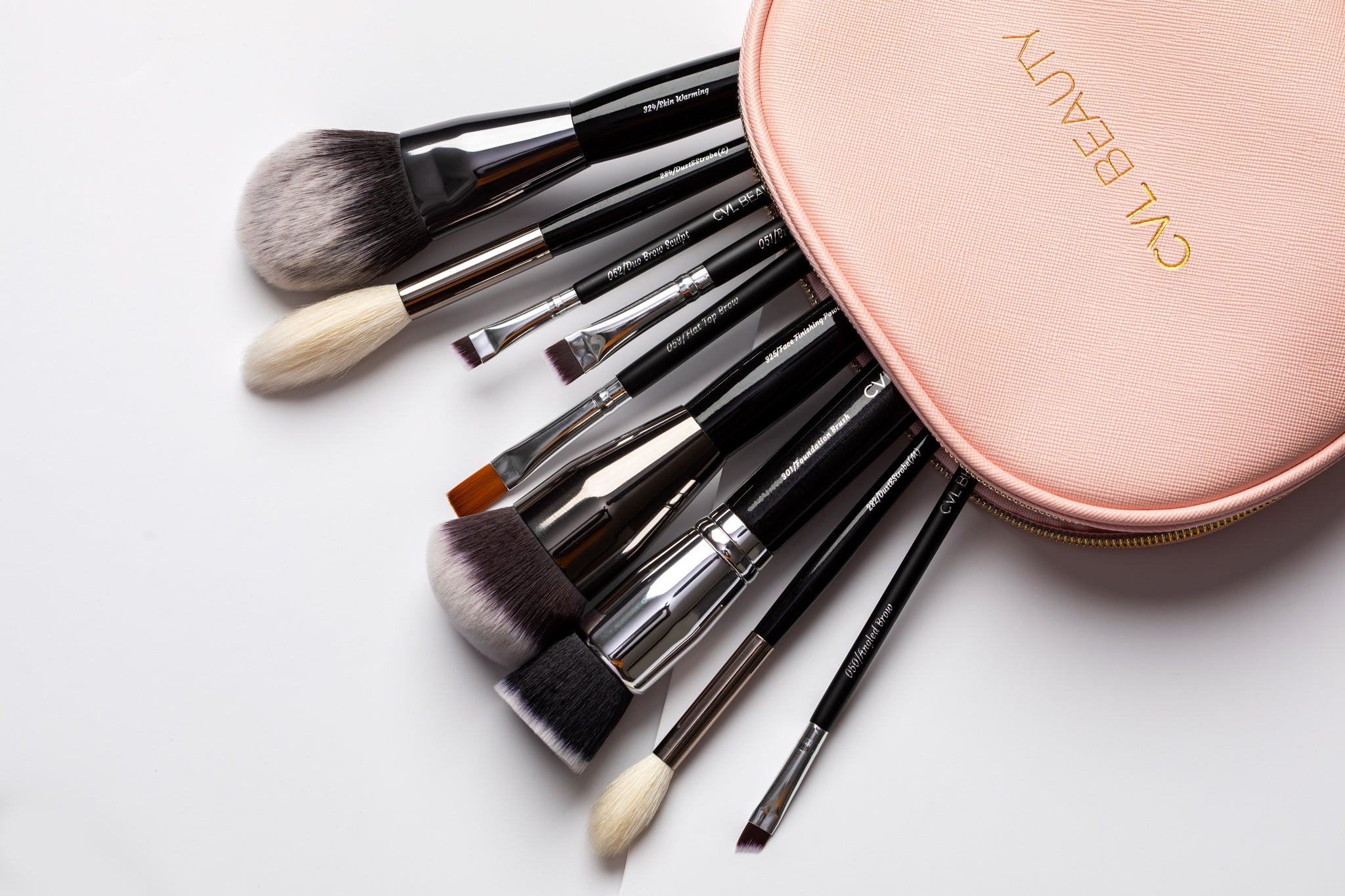BREAST CANCER AWARENESS

Hello Lovelies! October is breast cancer awareness month and hopefully you saw a few ads, campaigns or even read an article about this. If so, that’s great! If not, it’s never too late because Awareness is Power. How much do you really know about breast cancer? Did you know 1 in 8 women will be diagnosed with breast cancer over the course of her life? As the second overall most common type of cancer and first most common in women, it is imperative that all of us, male and female get to know as much as possible about breast cancer.
RISK FACTORS
What we can tell about the causes of cancer are mutations of DNA within the cell. You can be born with these gene mutations or they can occur after birth. However, being born with such a gene mutation doesn’t mean it’s set in stone that you will have cancer, but you are predisposed to a certain type of cancer. The other risk factors which could increase the risk of cancer include smoking, drinking (more than one alcoholic drink a day), harmful substances in the environment such as second smoke asbestos and benzene. While doctors have an idea of what may increase your risk of cancer, the majority of cancers occur in people who don’t have any known risk factors.
For breast cancer in particular, some risk factors include being female [less than 1% of cases recorded in the USA are in men]. Many hormonal induced factors such as beginning your period at a young age, starting menopause at an older age, never having had children or having your first child over the age of 30. Lifestyle factors that put people at risk include obesity and drinking alcohol. Age is also a huge factor as the risk of breast cancer increases every decade you age.
SYMPTOMS
There are many symptoms of breast cancer though many reported cases had no symptoms at all. People who have been diagnosed with breast cancer have shown one or a combination of the following symptoms;
- Lumps or nodes in the breast or underarm
- Pain in the breast
- Peeling or flaky skin in the nipple area
- Discharge from the nipple
- An increase in breast size or shape
- Change in color
- Dimpling of any part of the breast or nipple
- Thickened skin or swelling
Do note that many of these conditions could be caused by other diseases and do not necessarily forebear a cancer diagnosis. Remain calm and see your doctor for further testing.

PREVENTION
As the popular saying goes, Prevention is better than cure. That being said, please pay close attention here. When it comes to breast cancer prevention doctors approach it in two ways. Risk factors as we’ve already discussed are things that put you at risk of developing cancer and the best way to go about this is avoiding them. Smoking, for example, is a major risk factor that can be avoided. The second approach is to look at protective factors, which are things that decrease the risk of the disease. This includes activities such as eating a healthy diet and regular exercise. Breast cancer screening is also a method to detect and prevent it (especially for people who are genetically pre-disposed). It is recommended that women between the ages of 50-74 get a mammogram every 2 years. Women below this age can decide with their doctors how often they need to have one depending on their risk factors. A mammogram is essentially an x-ray of the breast and it is the best way to detect breast cancer early because it can detect lumps before they are large enough to be felt by physical examination. Another type of screen is clinical examination where a doctor or healthcare practitioner physically examines the breast for any presence of lumps. This can also be done on oneself.
Self-examination, which I entreat every woman to incorporate into her beauty and self-care regimen, is done by using one’s hands and eyes to determine if there are any changes to the look or feel of the breast. This should be done at the part of your menstrual cycle when your breasts are least tender. You should start with a visual inspection. Place your hands on your hips, and look out for any part of the breast that is either dimpled or protruding. Also look out for inverted nipples. Now raise your hands over your head and continue to look for any changes. For examination by hand, it is best to lie on your back as this makes the breast tissue spread out and makes it easier to examine. Take your time and do it methodically. Apply different levels of pressure. First light, then medium and deep pressure. If you do find any lumps however, don’t panic. Speak to your doctor and they will further examine you and take some tests. Most lumps in the breast turn out to be benign, i.e. harmless and non-cancerous.


BREAST CANCER AND COSMETICS
Considering that less than 20% of breast cancer is genetic, it has become imperative that we consider the chemicals we introduce into our bodies. This is because some chemicals work as “hormone disruptors”, by changing the way estrogen and other hormones operate in our bodies. These hormone disruptors unfortunately contribute to cancer development in some people. Two of such hormone disruptors; Parabens and Phthalates, permeate the most commonly used cosmetic products on the market. I advise you check the content of the products you use and use them wisely.
TREATMENTS
If it turns out that there are cancer cells in the tissue after a breast examination, further treatment will bebprescribed. Treatment depends on what kind of breast cancer has been detected and how far it has spread. Treatments include surgery: cutting out the affected tissue, chemotherapy: using pills or intravenous medicines or both to shrink and kill the cancer cells, radiation therapy: using rays similar to x-rays to kill the cancer cells, hormonal therapy also called endocrine therapy is used for tumors whose growth are fueled by hormones, they block the hormone actions causing the cancer cells to shrink. Others, mostly people with advanced stages of cancer decide to try alternative and experimental treatments which can be anything from surgeries, drugs to drastic lifestyle changes. Since orthodox medicine doesn’t usually approve of these, the effectiveness of these other kinds of treatments cannot be accurately assessed.
SURVIVAL RATES
The prognosis (chances of survival) for breast cancer varies depending on what stage the cancer has progressed to, so stages 0, 1 and 2, have better survival rates than 3 and 4. The 5-year survival rate for women with stage 1 is 90-99%. This means that between 90 to 99 out of 100 women will live for at least for 5 years after they have been diagnosed. The average 10-year survival rate is about 84%. The good news is that about 62% of women are diagnosed with cancer at this early stage.
It is important to remember that there is still so much that we don’t know about breast cancer and cancer in general. Also, with new research and better treatments, people diagnosed with breast cancer have increasingly higher survival rates and quality of life. However, one thing most healthcare workers agree on is that early detection and treatment has proven to be the most effective in the battle against breast cancer. So, forward this article to someone and then lie back and give yourself a self-breast exam. Feel for lumps, Save your bumps.




Comments